Ansys Q3D Extractor
The 3D and 2D quasi-static electromagnetic field simulations necessary for the extraction of RLCG parameters from an interconnect structure are easily performed by Ansys Q3D Extractor.
The 3D and 2D quasi-static electromagnetic field simulations necessary for the extraction of RLCG parameters from an interconnect structure are easily performed by Ansys Q3D Extractor.
The parasitic parameter of frequency-dependent resistance, inductance, capacitance, and conductance (RLCG) for electronic goods is rapidly calculated using the Ansys Q3D Extractor.
The Q3D Extractor is perfect for developing high-speed electronic equipment’s complex packages and connectors. It’s also utilized in electrical power distribution, power electronics, and electric drive systems for high-power bus bars and power converter components.
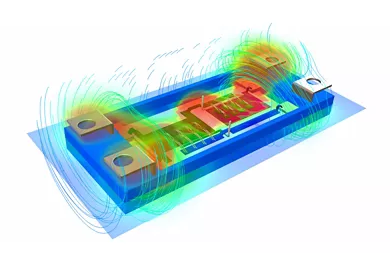
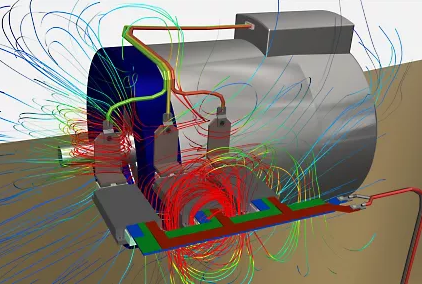
Ansys Q3D Extractor is suitable for developing complex electronics packages, and connectors used in high-speed electronic equipment, as well as high-power bus bars and power converter components used in power electronics and electric motor systems.
Ansys Q3D Extractor efficiently runs 3D and 2D quasi-static electromagnetic field simulations to extract RLCG parameters from an interconnect structure and build an equivalent SPICE model. INterconnects, IC packages, connectors, PCBs, bus bars, and cables can all benefit from these precise models, which can be used to perform signal integrity analysis and analyze electromagnetic phenomena.
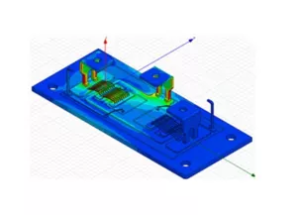
3D Quasi-Static Field Solver
An improved quasi-static 3D electromagnetic field solver based on the method of moments (MoM) is included in Ansys Q3D Extractor, which is accelerated by the fast multipole approach (FMM). The proximity and skin effect, dielectric and ohmic loss, and frequency dependence are among the findings. Q3D Extractor extracts resistance (R), partial inductance (L), capacitance (C), and conductance (G) in three dimensions quickly and effortlessly.
2D Extractor: Cable and Transmission Line Field Solver
Ansys Q3D Extractor includes a powerful quasi-static 2D electromagnetic field solver that employs the finite element method (FEM) to calculate per-unit-length RLCG parameters for cable models, transmission lines, characteristic impedance (Z0) matrices, propagation speed, delay, attenuation, effective permittivity, differential and common-mode parameters, and near-and far-end crosstalk coefficients.
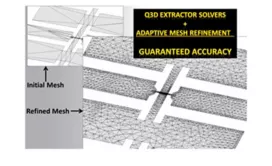
Only geometry, material parameters, and the desired result are required when using automatic adaptive meshing algorithms. The meshing procedure employs a very reliable volumetric meshing technique, as well as multithreading, which reduces memory usage and speeds up simulation time. This tried-and-true technique simplifies the process of creating and modifying a finite element mesh, making advance numerical analysis accessible to employees at all levels.

High-Performace Computing (HPC) solutions for electronics offers parallel processing for solving the toughest and most challenging models- models with considerable geometric detail, massive systems, and complex physics.
Mutlithreading: To shorten solution time, Electronics HPC makes use of several cores on a single machine. The initial mesh generation, matrix solutions, and field recovery are all sped up by multithreading technology.
Spectral Decomposition Method: By distributing many frequency points in parallel across computation cores and nodes, the spectrum decomposition technique (SDM) speeds up frequency sweeps. This approach can be used in conjunction with mutlithreading to speed up the extraction of individual frequency points, while SDM parallelizes the extraction of multifrequency points.
HPC in the Cloud: High-performance computing (HPC) is relatively easy to access and use with Ansys Cloud. It was created in partnership with Microsoft Azure, a prominent cloud platform for high-performance computing. Ansys Cloud has been incorporated into Ansys Electronics Desktop, allowing you to tap into unlimited, on-demand computing power right from your design environment.
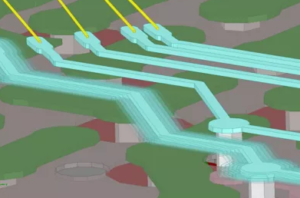
Simulation-Driven Product Development relies heavily on parameterization and optimization. The parametric analysis gives you a complete picture of the design space based on your design factors, allowing you to make smarter engineering decisions. Optimization methods allow the software to find better designs on its own. Parameterization and optimization capabilities include:
Parametric Analysis:
Optimization:
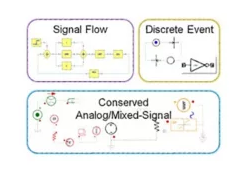
Simplorer integrates Ansys Maxwell, Ansys HFSS, Ansys Slwave, and Ansys Q3D Extractor to provide a powerful platform for modeling, simulating, and analyzing system-level digital prototypes. Simplorer lets you test and improves the performance of software-controlled multidomain systems. Simplorer provides wide support for creating and simulating system-level physical models, with flexible modeling options and close integration with Ansys 3D physics simulation, to help you connect conceptual design, thorough analysis, and system verification.
Simplorer is a powerful tool for designing electrified systems, power production, conversion, storage, and distribution, EMI/EMC investigations, and general multidomain system optimization and verification.

Ansys Q3D Extractor is perfect for creating IBIS package models since it can generate extremely accurate reduced-order SPICE models for use in circuit simulation. Crosstalk, ground bounce, interconnect delays, and ringing can all be studied in order to better understand the performance of high-speed electronic designs such as multilayer printed circuit boards, sophisticated electronic packages, and 3D on-chip passive components.
Q3D Extractor is also required for extracting correct electrical parasitic of crucial interconnect components in the package (bondwires), on the board (critical nets), and for the chip, package, and board connection path (i.e., connectors, cables, sockets, and transmission lines).
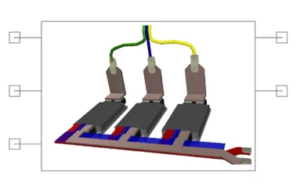
To produce similar circuit models for high-speed electronic (SPICE subcircuits/ladder type lumped models), use Ansys Q3D Extractor. The type of model produced by Q3D Extractor is determined by the solver utilized. Simplorer SML, HSPICE Tabular W-Element, PSpice, Spectre, IBIS ICM/PKG models, and Ansys CPP Models are all created by the 2D and 3D field solvers.
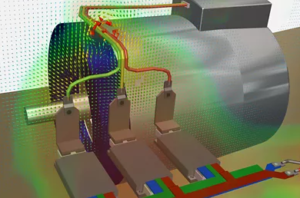
Ansys Q3D Extractor is perfect for optimizing inverter/converter topologies and minimizing bus inductance, overvoltage situations, and short-circuit currents in hybrid-electric technologies and power distribution applications. The software pulls resistance, partial inductance, and capacitance parasites from high-power bus bars, cables, and high-power inverter/converter modules, then feeds them into Ansys Twin Builder to investigate a power electronic system’s EMI/EMC performance. Electrothermal stress induced by electrical currents can be studied using Ansys Icepak and Ansys Mechanical.
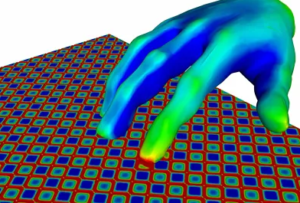
By analyzing the RLCG matrix data of touchscreen devices with Q3D Extractor, you may overcome design issues early in the design phase. The ability to solve thin conductive layers efficiently, such as ITO, can speed up solutions by up to 22 times when compared to standard thick metal solutions.
Ansys HFSS simulates 3-D full-wave electromagnetic fields for accurate and rapid design of high-frequency and high-speed electronic components.
Ansys Maxwell simulates 2-D and 3-D low frequency electromagnetic fields for accurate and rapid design of electromagnetic and electromechanical devices.
Ansys Icepak provides electronic cooling solutions that utilize the industry leading CFD solver for T&F flow analyses of integrated circuits, PCBs and electronics.
Ansys SIwave is a specialized design platform for power integrity, signal integrity and EMI analysis of electronic packages and PCBs.
Ansys Q3D Extractor provides 2-D and 3-D parasitic extraction for engineers designing electronic packaging and power electronics.
Electronics Desktop is a unified platform for electromagnetic, circuit and system simulation. Free download available for students!
Nuhertz FilterSolutions provides automated RF, microwave and digital filter design, synthesis and optimization in an efficient, intuitive process.
Ansys Motor-CAD is a specialized electric machine design tool that allows for quick multiphysics simulation over the entire torque-speed working range.
Delivers simulations of cloud-to-ground lightning strikes, high-intensity radiated fields & emissions, EM pulses, EMI/EMC, crosstalk and more.